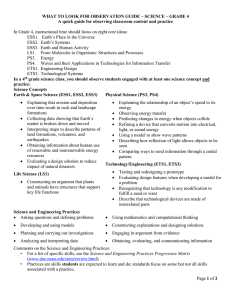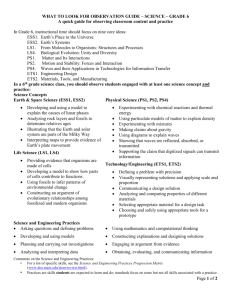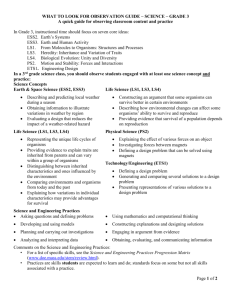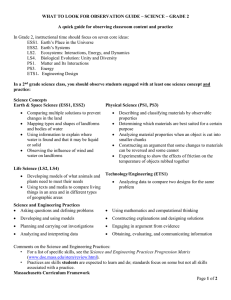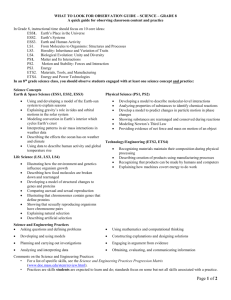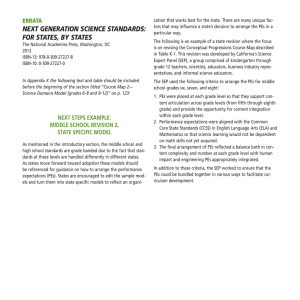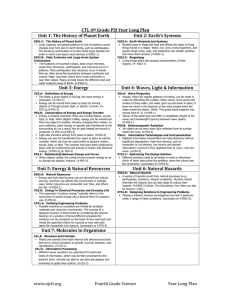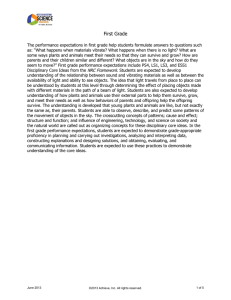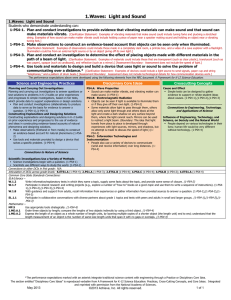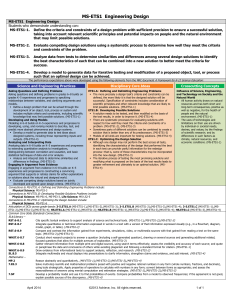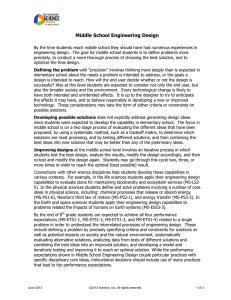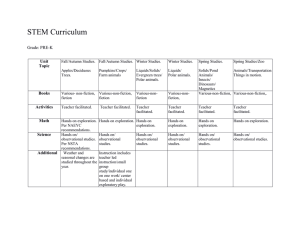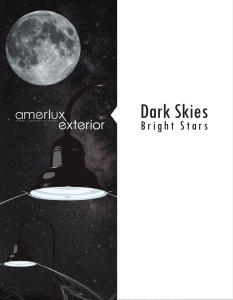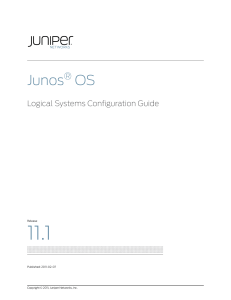sci g1
advertisement
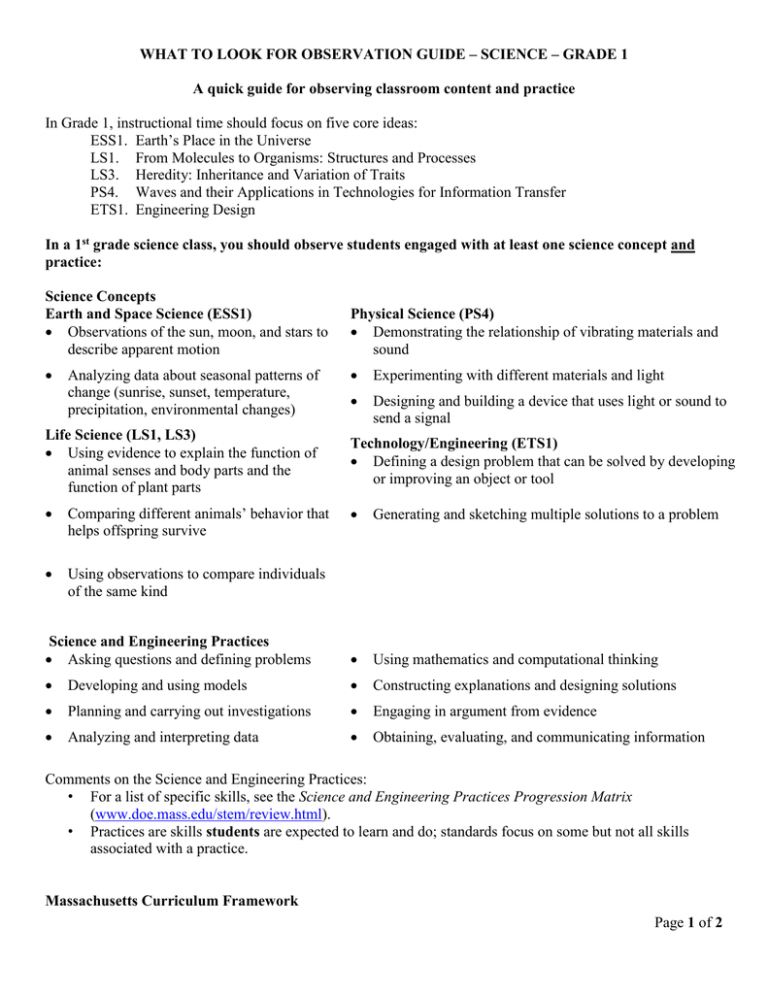
WHAT TO LOOK FOR OBSERVATION GUIDE – SCIENCE – GRADE 1 A quick guide for observing classroom content and practice In Grade 1, instructional time should focus on five core ideas: ESS1. Earth’s Place in the Universe LS1. From Molecules to Organisms: Structures and Processes LS3. Heredity: Inheritance and Variation of Traits PS4. Waves and their Applications in Technologies for Information Transfer ETS1. Engineering Design In a 1st grade science class, you should observe students engaged with at least one science concept and practice: Science Concepts Earth and Space Science (ESS1) Observations of the sun, moon, and stars to describe apparent motion Physical Science (PS4) Demonstrating the relationship of vibrating materials and sound Experimenting with different materials and light Designing and building a device that uses light or sound to send a signal Analyzing data about seasonal patterns of change (sunrise, sunset, temperature, precipitation, environmental changes) Life Science (LS1, LS3) Using evidence to explain the function of animal senses and body parts and the function of plant parts Technology/Engineering (ETS1) Defining a design problem that can be solved by developing or improving an object or tool Comparing different animals’ behavior that helps offspring survive Generating and sketching multiple solutions to a problem Using observations to compare individuals of the same kind Science and Engineering Practices Asking questions and defining problems Using mathematics and computational thinking Developing and using models Constructing explanations and designing solutions Planning and carrying out investigations Engaging in argument from evidence Analyzing and interpreting data Obtaining, evaluating, and communicating information Comments on the Science and Engineering Practices: • For a list of specific skills, see the Science and Engineering Practices Progression Matrix (www.doe.mass.edu/stem/review.html). • Practices are skills students are expected to learn and do; standards focus on some but not all skills associated with a practice. Massachusetts Curriculum Framework Page 1 of 2 WHAT TO LOOK FOR OBSERVATION GUIDE – SCIENCE – GRADE 1 Science and Technology/Engineering What to Look For Guide The practices below, which are aligned to the MA Model Teacher Rubric, should be evident in planning and instruction. Any particular lesson will demonstrate some of the practices, not all. For each lesson, artifacts or observables might include: lesson plan, tasks and assessments, teacher instruction, student discussion and behavior, or student work. Standard I: Curriculum, Planning, and Assessment (I-A, I-B) Standard II: Teaching all Students (II-A) The lesson focuses on grade-level standard(s). The teacher actively engages students in authentic scenarios that provide opportunities to make sense of phenomena or design solutions. The lesson integrates science and engineering practice(s) with core idea(s) to support development of skills and conceptual understanding. The lesson engages students in making sense of relevant phenomena or solving relevant problems (through firsthand experiences or representations). The teacher promotes the use of evidence and provides time for students to communicate, clarify, justify, and represent their thinking about the content of the lesson. The teacher uses variation in students’ ideas and strategies to strengthen other students’ understanding. The teacher addresses student variability, and meets diverse needs (including English Language Learners and students with disabilities) to ensure equitable access to the lesson and achievement of the standard(s). The teacher references student work and discussion to summarize the practices and core ideas learned. The lesson intentionally relates new learning to students’ prior skills and knowledge. The lesson provides grade-appropriate connection(s) to Literacy and/or Mathematics standards. The lesson includes opportunities to monitor learning throughout the lesson (such as through questioning or student performance assessments). NOTES: See the full set of Standards and Indicators in ESE’s Model Teacher Rubric (http://www.doe.mass.edu/edeval/model/PartIII_AppxC.pdf). Page 2 of 2
